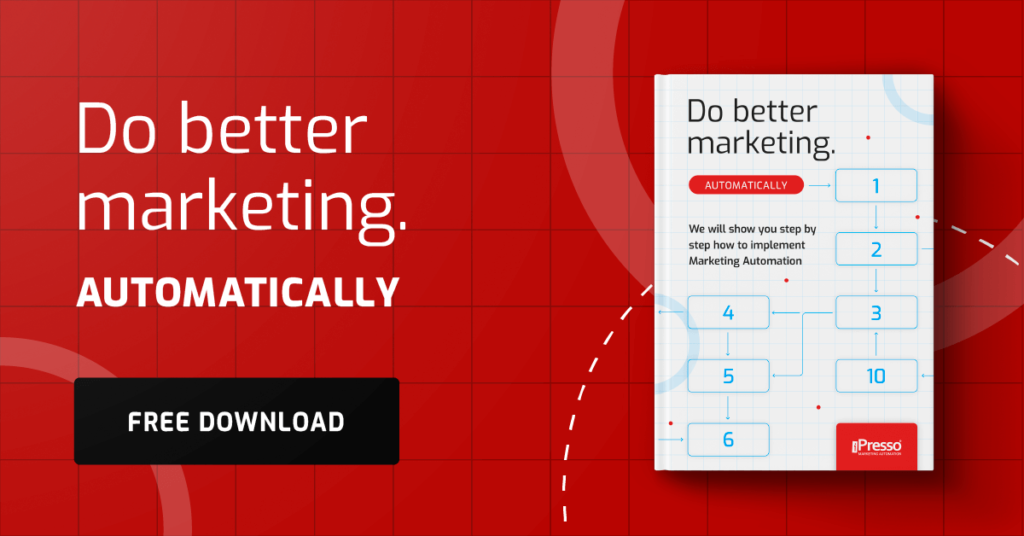Stop guessing which customer path works. Run automated A/B tests for entire campaigns and learn the truth

Most of us are very familiar with the power of A/B testing in the context of single elements – the subject line of an email, the color of a CTA or the headline on a landing page. But what if you could automatically test entire customer paths in your Marketing Automation? Shifting your thinking from optimizing single touchpoints to testing complex scenarios is a real revolution that will allow you to achieve much better results.
Why test entire paths, not just individual emails?
Traditional A/B testing – often focuses on micro-conversions. We measure email opens, banner clicks, form fills. These are important, but they are only a piece of the puzzle. The real value lies in understanding how different elements of a campaign work together to impact the entire customer journey. The customer doesn’t see a single email or pop-up in isolation – they see the entire communication.
Imagine a customer’s path consisting of several stages: going to a website, downloading an e-book, a series of educational emails, and finally a promotional offer. If you optimize only a single email, but other elements of the path are ineffective, the entire effort may be in vain. Testing entire paths allows you to identify weaknesses in complex scenarios, optimize the flow of communication and, as a result, increase conversion rates and customer lifetime value (CLV).
A/B test automation in the context of Marketing Automation paths saves time and is more accurate. The system independently divides the audience groups, runs the tests, analyzes the results and automatically selects the winning variants. This eliminates the risk of human error and allows you to scale your efforts as your audience base grows.
What are A/B/X tests and why are they crucial for pathways?
When we talk about testing entire paths, we often go beyond simple A/B testing (comparing two variants). This is where A/B/X testing (multivariate testing) comes onto the scene, which allows you to simultaneously compare multiple variables and variants within a single scenario. You can test different combinations of communication channels, different content depending on segmentation, and even different message delays.
For example, in the path for abandoned shopping carts, you can test:
- Option A: Reminder email after 30 minutes + SMS after 2 hours.
- Option B: Reminder email after 1 hour with discount + pop-up on page after 3 hours.
- Option C: Web push only after 2 hours.
The Marketing Automation system will allow you to define these variants, split the traffic, and then measure which scenario generates the highest rate of recovering abandoned shopping carts.
How to automatically test entire paths in Marketing Automation?
The key to successfully automating path testing is to use the advanced features of Marketing Automation platforms. Here are the steps and elements to look out for:
- Define the hypothesis and purpose of the test. Before you start testing, you need to know what you want to achieve. Is the goal to increase conversions, shorten the purchase path, or perhaps increase engagement? Make a specific hypothesis, e.g. “A path variant with emails at shorter intervals and an additional web push will increase conversion by 15%.”
- Visualize the entire path you want to test. Identify entry points, conditions, actions (sending an email, SMS, displaying a banner, changing contact status) and exit points.
- Choose a platform like iPresso, where you can test different versions of messages (emails, SMS, push notifications) within a single scenario, with automatic selection of the winning variant.
- Experiment with different times to send messages or activate the next steps of the path.
- Segment your target audience. The system will automatically divide traffic into segments that will go through different path variants. Make sure the groups are statistically significant so the results are reliable.
- Define different versions of the paths you want to test. This could be a different order of activities, different content, or variable delays.
- Define when you want the test to end – whether when statistical significance is reached or after a certain period of time.
- The system should collect data in real time and present it in a clear way. Analyze not only the basic metrics (opens, clicks), but especially those that demonstrate the achievement of your main goal (conversions, revenue, CLV). Pay attention to tools that visualize paths and show where users drop off.
- Once you have completed the test and selected the best option, implement it in your operations. Remember that optimization is an ongoing process. Marketing Automation is a dynamic environment, and customer behavior evolves. Repeat tests on a regular basis to make sure paths are always maximized.
Summary
A/B testing automation at the whole-path level in Marketing Automation is the next step in the evolution of effective marketing. It allows marketers to move beyond testing individual elements and focus on optimizing the entire customer journey. This allows you to precisely tailor communications to your audience’s needs and preferences, increase engagement, optimize conversions and build more lasting customer relationships.
Remember, data doesn’t lie – use it to make your Marketing Automation efforts not only automated, but most importantly, as effective as possible. Don’t be afraid to experiment and test, and you’ll see your campaigns reach new levels of effectiveness. Fill out the brief and find out that A/B testing is something you need.



